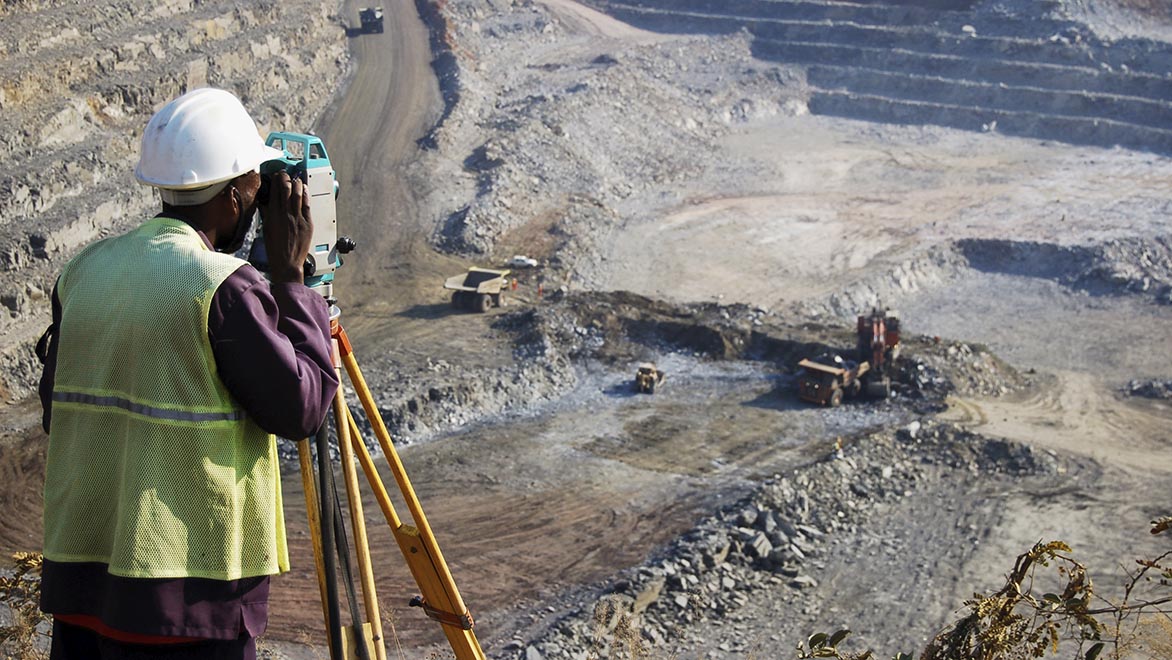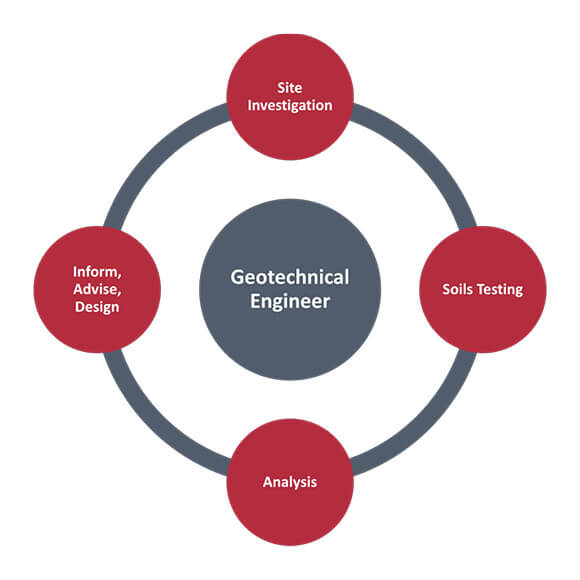Little Known Questions About Geotechnical Engineering For Construction Projects.
Little Known Questions About Geotechnical Engineering For Construction Projects.
Blog Article
About Geotechnical Engineering For Construction Projects
Table of ContentsThe Single Strategy To Use For Geotechnical Engineering For Construction ProjectsSome Ideas on Geotechnical Engineering For Construction Projects You Need To KnowThe Buzz on Geotechnical Engineering For Construction ProjectsThe Geotechnical Engineering For Construction Projects IdeasGeotechnical Engineering For Construction Projects Fundamentals ExplainedOur Geotechnical Engineering For Construction Projects IdeasAbout Geotechnical Engineering For Construction Projects
and Kovacs, W. (1981 ), An Introduction to Geotechnical Engineering, Prentice-Hall, Inc. Deep Scan Technology (2023 ): Deep Check Technology uncovers surprise structures at the site of Denmark's highest structure. "Geofrost Coring". GEOFROST. Fetched 20 November 2020. Han, Jie (2015 ). Principles and Technique of Ground Enhancement. Wiley. ISBN 9781118421307. RAJU, V. R.Ground Enhancement Technologies and Instance Histories. Singapore: Research Publishing Solutions. p. 809. ISBN978-981-08-3124-0. Ground Renovation Concepts And Applications In Asia. Pariseau, William G. (2011 ). Design analysis in rock technicians. CRC Press. Hegde, A.M. and Palsule P (Geotechnical Engineering for Construction Projects).S. (2020 ), Efficiency of Geosynthetics Reinforced Subgrade Subjected to Repeated Car Loads: Speculative and Numerical Researches.
Cengage Knowing, Stamford, 666 p. Atkinson, J., 2007. The technicians of dirts and structures. The Observational Approach in ground design concepts and applications.
Some Of Geotechnical Engineering For Construction Projects
Laboratory and field testing plays a critical function in this process. By drawing out samples from the earth's subsurface and using a suite of examinations, geotechnical engineers can forecast the behaviour of soil layers and evaluate their viability for various building and construction endeavours. The significance of geotechnical design in civil engineering can not be overemphasized, attributable to several aspects: The first action in any geotechnical research study entails identifying the dirt kind at the building site.
The foundation acts as the bedrock of any building job. Choosing the proper foundation kind is a choice that pivots on the thorough evaluation offered by geotechnical engineering.

Geotechnical site investigation is an essential action in the planning and implementation of any kind of construction project. It involves the collection and evaluation of information associated with the physical homes of soil and rock below a proposed construction website. This details is essential for the style and construction of safe, steady, and sustainable structures.
Facts About Geotechnical Engineering For Construction Projects Revealed
In this blog, we will certainly dig into the relevance of geotechnical site examination, its various parts, and exactly how it profits building and construction projects. Geotechnical website examination, also called subsurface expedition, entails a collection of activities focused on establishing the soil, rock, and groundwater problems at a construction website. The key objectives are to recognize prospective geotechnical threats, evaluate the design residential properties of subsurface materials, and supply referrals for the design and building of structures, keeping wall surfaces, and various other frameworks.
The workdesk research aids in determining prospective geotechnical problems and planning the subsequent fieldwork. This entails observing the topography, drain patterns, existing structures, vegetation, and any kind of signs of instability or erosion.
Excitement About Geotechnical Engineering For Construction Projects
Shallow test pits are excavated to straight observe and sample the soil and rock. This approach works for studying the upper layers of the subsurface and recognizing near-surface dangers. Non-invasive geophysical approaches, such as seismic refraction, ground-penetrating radar (GPR), and electrical resistivity tomography (ERT), are made use of to map subsurface conditions and find anomalies.
Dirt and rock samples collected during the field investigation are subjected to laboratory testing YOURURL.com to identify their physical and mechanical homes. These examinations give crucial information for geotechnical evaluation and layout.
The primary benefit of geotechnical site investigation is ensuring the safety and stability of structures. By comprehending the subsurface problems, engineers can create foundations and other structural elements that can endure the tons and environmental pressures they will go through. This reduces the risk of negotiation, decrease, and architectural failure.
The Greatest Guide To Geotechnical Engineering For Construction Projects
Understanding dirt features can direct the selection of excavation methods, dewatering methods, and ground renovation procedures. This ensures reliable and safe construction methods. Geotechnical site investigations are often needed by developing codes and laws. Following these demands makes certain compliance with lawful and safety requirements, staying clear of prospective lawful obligations and project delays.
This details is indispensable for task managers, designers, and service providers in developing reasonable timetables, budgets, and contingency plans. Geotechnical Engineering for Construction Projects. Skyscraper in a Coastal AreaIn a seaside city, a high-rise domestic structure was prepared on a website with believed loose sand deposits and a high water table. An in-depth geotechnical examination, consisting of borehole exploration, CPT, and geophysical studies, was conducted
The Geotechnical Engineering For Construction Projects PDFs
Based upon these searchings for, the structure style was modified to consist of deep stack foundations prolonging into secure strata, and ground renovation strategies, such as vibro-compaction, were executed to mitigate liquefaction threats. This positive method ensured the safety and security of the building while staying clear of expensive post-construction remediation. Infrastructure Growth on a Sloping TerrainA major framework job, including the building of a freeway and bridges, was prepared on a hilly surface with steep inclines.

The Leaning find more Tower of Pisa (Italy), a famous architectural wonder, is well known for its unplanned tilt from considerable geotechnical issues. The tower's structure was improperly created to deal with the soft, unpredictable soil underneath it, leading to uneven negotiation and its distinctive lean. Our globe is populated with outstanding framework projectsfrom towering high-rises to sprawling bridgesall standing statement to the advancement of the numerous building tools and techniques readily available.
Geotechnical engineering is a specialized area within civil design that concentrates on examining the actions of earth materials. This branch delves deep into the groundinvestigating just how the soil, rock, and groundwater at a construction website can influenceand be influenced bythe infrastructure that we set up on and right into them. Prior to a single brick is laid or a concrete foundation put, geotechnical designers probe into the earthgathering crucial data concerning the site's dirt composition, rock structure, and groundwater levels.
The 30-Second Trick For Geotechnical Engineering For Construction Projects
is a tool made use of to assess the stability and load-bearing capability of stacks throughout installment, leveraging the concept of wave propagation. It enhances building performance by giving real-time evaluations, therefore making certain secure and reliable heap structures. Among the sensible applications of geotechnical design includes determining and implementing the appropriate techniques for structure building and construction.
Pile driving represents more than the mere act of inserting architectural aspects into the ground. However, it is a meticulously orchestrated procedure of moving a framework's tons past the less stable dirt layers better to the surfacedown to the a lot more significant strata that lie under. When it comes to stack driving, think about just how geotechnical designers skillfully use this strategy to equally disperse the framework's weight.
Report this page